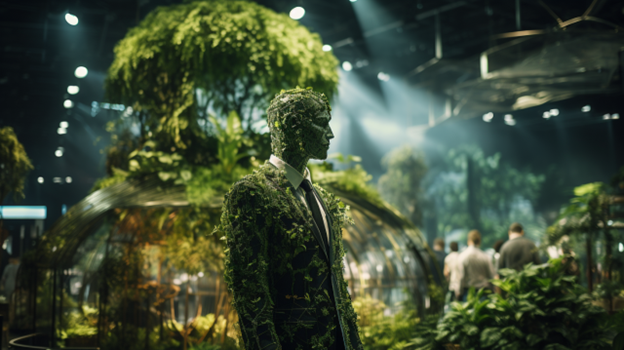The buzz around eco-friendly trade shows and sustainability in events has grown louder in recent years. Brands are increasingly conscious of their environmental impact and are seeking ways to showcase this commitment. Unfortunately, this surge in interest hasn’t always translated into genuinely sustainable practices. What we often see is “greenwashing” – surface-level efforts that do more for appearance than the environment.
Recently, kubik’s Adriano Almeida, Head of Creative Services and Strategy, wrote about sustainability in the tradeshow industry and delved into research on the issue to help summarize which aspects of the industry and process have the greatest impact.
Adriano’s article emphasizes the need for truly sustainable practices beyond just the use of eco-friendly materials and how brands can integrate these practices into their event strategies. We’re expanding on Adriano’s insights to showcase how kubik incorporates sustainable development and eco-friendly practices into our tradeshow fabrication and management services.
kubik’s Approach to Sustainable Event Planning
At kubik, sustainability is a key consideration we incorporate into our event planning methodology. From setting goals and ideating in the strategy and creative phase to assessing materials and defining a direction in the evaluation stage, we aim to integrate environmental consciousness every step of the way. Our commitment extends through the costing and value engineering process, ensuring that sustainable solutions are also cost-effective. This holistic approach ensures that sustainability is not just an add-on but a fundamental aspect of every project.
 A Sustainable & Creative Event Fabrication Case Study: A Paper Race
A Sustainable & Creative Event Fabrication Case Study: A Paper Race
A prime example of our sustainable approach is seen in the Camper-sponsored Volvo Ocean Race pavilion. Camper sponsored the Emirates Team New Zealand for the world’s premier offshore racing event, the Volvo Ocean Race. The event’s standout feature was its travelling pavilion, designed by Japanese architect Shigeru Ban, using innovative paper and cardboard tubing as construction materials. The six-meter-tall pavilion made with nestable cardboard tubes was able to be easily deconstructed and transported to different countries in the race, including China, the USA, and France.

In this project, and in all our endeavors, kubik strives to redefine what sustainability means in the trade show and event industry. It’s not just about using “green” materials when possible; it’s about integrating sustainable practices throughout the event planning and execution process.
Stay tuned for our next blog post, where we’ll delve deeper into how we drive sustainability beyond material choices.
Check out stories for more innovative tradeshow and experiential event projects kubik has helped bring to life.


 A Sustainable & Creative Event Fabrication Case Study: A Paper Race
A Sustainable & Creative Event Fabrication Case Study: A Paper Race